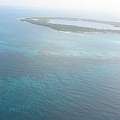 「世界保育聯盟」(IUCN)11日於美國華府舉行的海洋保護區高峰會中,發行一份建立海洋保護區網絡的新指南。許多海洋學家對此肯定地表示,若能將眾多海洋保護區整合成一個巨型網絡,固然較能減少氣候變遷、過度漁撈與汙染等外力對海洋生物與生態系統的危害,但在執行層面上可能會遇到不少阻力。
「世界保育聯盟」(IUCN)11日於美國華府舉行的海洋保護區高峰會中,發行一份建立海洋保護區網絡的新指南。許多海洋學家對此肯定地表示,若能將眾多海洋保護區整合成一個巨型網絡,固然較能減少氣候變遷、過度漁撈與汙染等外力對海洋生物與生態系統的危害,但在執行層面上可能會遇到不少阻力。
這份「放手落實海洋保護區網絡」的新指南確實也提及,「建立海洋保護區網絡並非一蹴可幾。規劃者應詳細思量一套漸進發展完整網絡的策略,同時減緩海洋瀕絕生物消失的速度、改善漁場漁獲耗盡的情形」。
指南在內容中強調「政治意願」是整個發展過程的關鍵,而若要凝聚落實的意願,勢必得在一開始就開放利益相關團體參與實行過程。儘管目標時程明訂為5年後的2012年,但該指南指出許多政府早已在時間的壓力下適應氣候變遷所帶來的挑戰。
與會者在12日的閉幕會議上將會針對落實網絡過程中的挑戰,為海洋保育團體和各國政府訂定行動方針。此外,此次高峰會亦將推出一項名為 “Wet List”的新工具,隨時向市民社會報告海洋保護的進度與狀況。
Connecting marine reserves into larger networks will make marine species and ecosystems more resistant to climate change, overfishing and pollution, many ocean scientists agree, but making it happen can be difficult. Today, a new guide for establishing marine protected area networks was released at the IUCN Marine Protected Area Summit in Washington, DC.
The new guide, "Establishing Networks of Marine Protected Areas – Making It Happen," says, "it is unrealistic to expect that building MPA networks can be achieved in a single step. Instead, planners should expect to develop a gradual strategy for implementing a full network, slow the loss of endangered marine species, and restore depleted fisheries."
Key to the entire process, the guide stresses, is political will, and developing this will requires involving stakeholders from the very beginning in an open, participatory process. But time is short, and the target date is 2012, just five years away. The pressure of climate change is particularly challenging, but governments are already adapting to it, the draft says.
Tomorrow, at the close of the Summit, participants will finalize the challenge, identifying priorities for action for the marine community and governments around the world. The Summit will also launch a new tool, called the "Wet List," for increasing understanding of how well oceans are protected.
全文及圖片詳見 ENS報導




